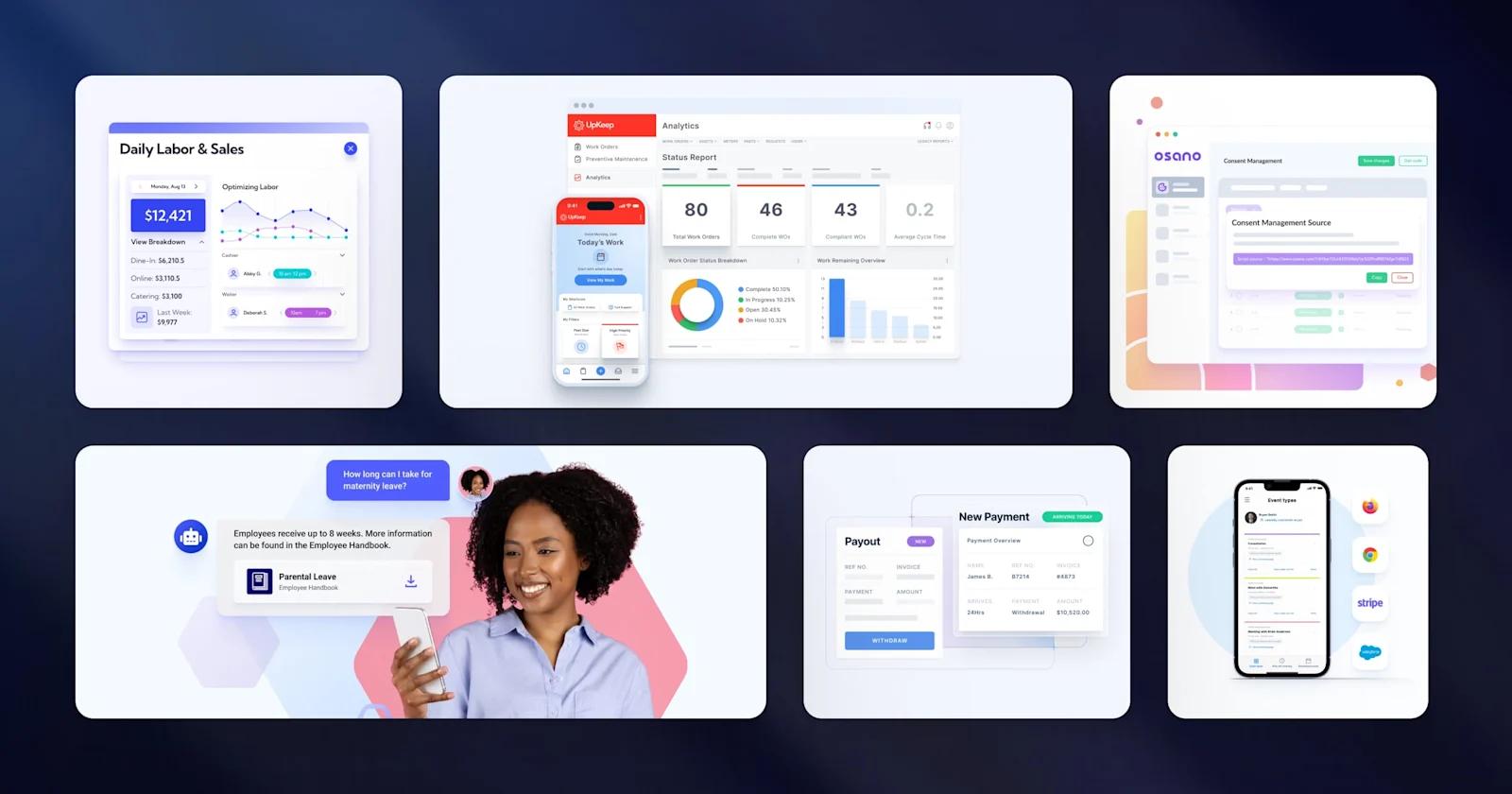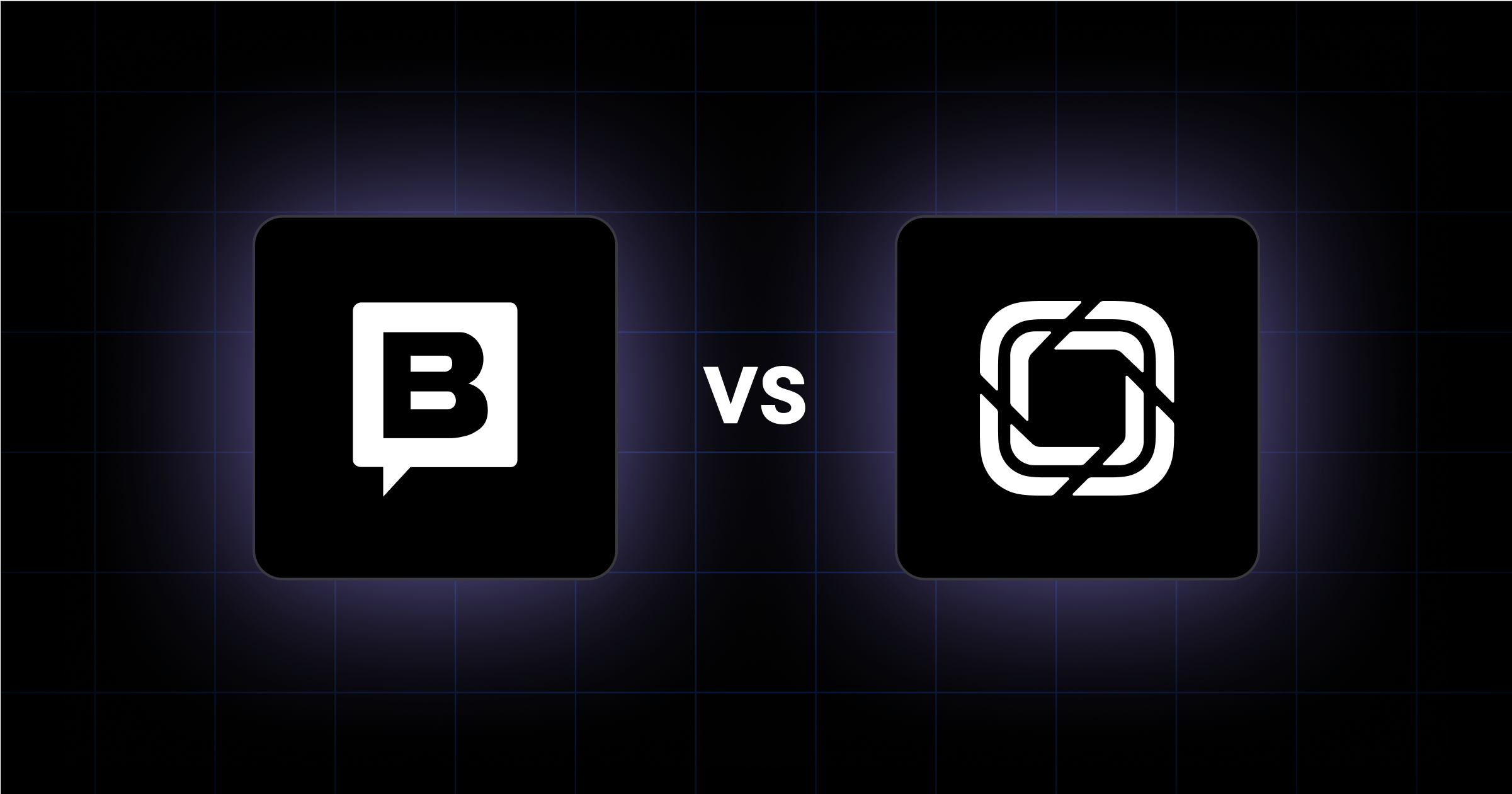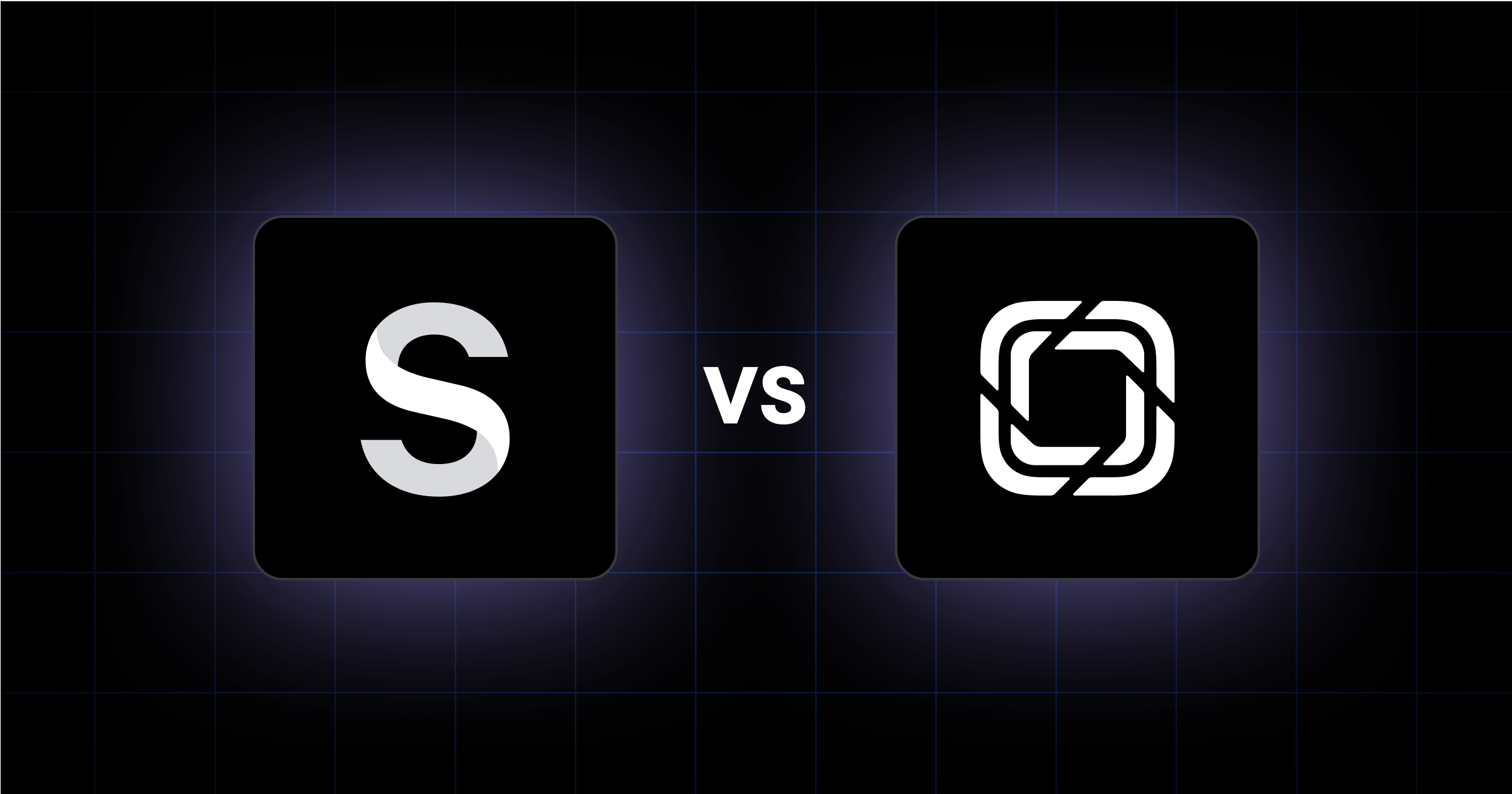Want to make your product have a lasting first impression? Look no further than product illustrations!
When it comes to product marketing, illustrations are key to grabbing attention and showing off your offerings. Todays’ top brands bolster their visual identity with captivating illustrations - intriguing, informing, and converting prospective customers.
In this article, we’ll highlight some of our favorite illustrations from a variety of products, both physical and digital. We hope these insights and examples provide inspiration for your next illustration design project!

What Are Product Illustrations?
Product illustrations are visual representations of physical or digital items, created to attract interest and convey essential information about a product. In the realm of design, these illustrations serve as powerful tools when it comes to advertising and product marketing.
Whether you’re selling a sleek smartphone, a next-gen pick-up truck, a thrilling video game, or cutting-edge software, product illustrations serve as the visual storytellers. They tell the essence of innovation, functionality, and user experience.
As marketers, understanding the nuances of product illustrations is fundamental, as it allows for effective communication of a product's value proposition and sets the stage for meaningful customer engagement.
Illustrations for Physical Products

In an era where online shopping dominates consumer behavior, illustrations for physical products serve as the touchpoints between potential buyers and the items they wish to purchase.
Especially applicable in digital marketing and web design, illustrations provide an artistic lens through which potential customers can learn about your tangible product. Therefore, they should accurately portray key aesthetics and functionalities.
Illustrations for Digital Products

In the digital realm, where user-friendliness is paramount, these illustrations serve as intuitive guides to your products.
Marketers must figure out how to position and showcase something that is inherently intangible. First, it's essential to understand the user's perspective - identifying what imagery will resonate most with your audience. Next, infuse creativity by exploring diverse styles, color palettes, animations, or other innovative design elements that compliment your brand.
Why Are Product Illustrations Effective?
Entice and Captivate
Product illustrations serve as compelling magnets, drawing in potential customers by appealing to their visual senses. In a sea of options, captivating visuals can transform casual interest into genuine curiosity. Through vibrant colors, intricate details, and imaginative designs, these illustrations create an emotional connection, enticing viewers to explore further. Their ability to captivate attention ensures that the first impression is not just memorable but indirectly impacts a purchase decision.
Build Brand Identity
Product illustrations are the cornerstone of brand recognition, providing a consistent visual language that customers can easily associate with a particular brand. By using a unified design approach across various platforms and products, these illustrations create a distinct and recognizable brand identity.
Whether it's the color scheme, art style, or specific elements used, visuals help reinforce the brand's presence in the minds of consumers. This recognition fosters trust and loyalty, as customers are more likely to engage with a brand they can easily identify and relate to. In the competitive market, a strong and cohesive brand identity sets a brand apart from its competitors and establishes a lasting impression on the audience.
Demonstrate Key Product Features
Product illustrations are invaluable tools for showcasing a product’s functionalities in a visually digestible format. Complex features and or unclear mechanisms can be translated into simple, intuitive visuals.
Whether it's showcasing a software's user interface or highlighting a physical product’s innovative components, these illustrations provide a glimpse into core capabilities. By demonstrating key features in a compelling manner, these visuals empower potential customers to grasp the product’s utility, making more informed decisions and reinforcing their confidence in your offerings.
Product Illustration Examples
Here we’ll cover some of our favorite product illustrations out there today, starting with physical products!
Physical Product Illustrations
Our examples succeed by utilizing captivating design elements which enhance the allure of their offerings. Oftentimes, these elements stem directly from their distinctive brand personality, making their product marketing even more potent.
Apple

Apple’s illustrations, characterized by clean lines and subtle gradients, seamlessly align with its minimalist design philosophy. By employing a consistent visual language across all platforms, from packaging to online interfaces, Apple creates a cohesive brand identity that enhances user experience and reinforces its dedication to quality.
These illustrations not only showcase product features but also evoke a sense of elegance and aspiration, captivating consumers and establishing an emotional connection with the brand. Apple's ability to merge artistic aesthetics with functional clarity in its product illustrations plays a pivotal role in its continued success and brand loyalty.
Bilt Mastercard

If you haven't heard of Bilt before, it’s an innovative credit card that turns rent payments into rewards. Bilt quickly made a name for itself with a fresh and unique brand identity, being more edgy, and simply more interesting than legacy credit companies.
Frankly, the Bilt card just looks cool. But the design and marketing team take it to another level with their illustrations. Somehow, they turned a credit card into artwork. Beyond Bilt’s benefits, their illustrations and product design certainly add to the allure, making it something you’d simply appreciate looking at every time you open your wallet.
Rivian

Onto Rivian - an exciting brand pioneering the emerging electric truck market. Their website’s “Vehicle Studio” is an excellent example of effective product illustrations. While most auto manufacturers have these vehicle configuration tools on their websites nowadays, Rivian’s is top-notch when it comes to its UX.
Potential customers can play around and build their dream Rivian in a matter of seconds. Each color, option, and angle are extremely life-like, making the experience even more intimate. The bright background also makes the trucks pop and appear to be that more real.
Liquid Death

Liquid Death has arguably the most successful product marketing strategy of any brand today. Somehow, they made water - the most plain product in existence - invigorating. Since launching, the canned water producer committed to an absurd and impossible to ignore brand identity.
We could start with simply the name “Liquid Death”, or their packaging. But their product illustrations are the most interesting aspect to us. Their merchandise, website, and social media are filled with artwork that reinforces the ridiculous brand they’ve conceived. It makes you realize Liquid Death is everything but water - it’s a brand that is more unique and valuable than its product.
LEGO

Lego's mastery in product illustration for its sets plays a pivotal role in its product marketing and branding strategies. The company's illustrations are not just instructional; they are vibrant, engaging stories that showcase the endless creative possibilities within each set. By depicting diverse scenarios and imaginative creations, Lego's illustrations inspire a sense of wonder and adventure, capturing the essence of their brand ethos: limitless creativity.
These visuals serve as powerful marketing tools, not only demonstrating the product's features but also fostering an emotional connection with customers. Through consistent and captivating product illustrations, Lego reinforces its position as a brand that encourages innovation, learning, and imaginative play, making it a beloved choice for both children and adults worldwide.
Digital Product Illustrations
Now, we’ll take a look at illustrations for digital products. While both types of products follow many of the same principles when it comes to visuals, illustrations for SaaS products and other digital goods can be even more difficult to nail.
Let’s check out a few brands that came up with brilliant designs to market their software-based products.
Monday.com

A standout from our best SaaS illustrations examples, Monday.com does a fantastic job at featuring product UIs throughout their website illustrations. This is extremely important when it comes to marketing SaaS products. When you have an intangible (and fairly expensive) offering, you must take extra care in building a trustworthy brand and showcasing your products’ value.
Monday.com lets potential customers gather glimpses of their solutions at every touchpoint on their website, whether that be their Products, Teams, or Platform pages. Collectively, they paint a picture of Monday.com, inspiring confidence in their brand throughout their buyer’s journey.
EA (Electronic Arts)

EA’s video game covers are a cornerstone of their marketing and branding success. Their cover artworks are masterfully crafted, often featuring detailed and captivating visuals that encapsulate the essence of the game. These illustrations not only create anticipation but also serve as storytelling devices, offering glances into the game's universe.
By combining artistic brilliance with compelling narratives, EA's game covers become powerful marketing tools, drawing players into immersive experiences and reinforcing the brand's identity as a purveyor of high-quality, engaging gaming content.
Shopmonkey

Providing valuable shop management software for automotive repair businesses, Shopmonkey utilizes product illustrations to add creative flair to its SaaS marketing website.
As a client of Webstacks, we helped Shopmonkey build an extensive illustration system, which makes illustrations consistent and scalable for brands. Shopmonkey’s illustrations reuse many of the elements found in their design system (such as colors, typographies, shapes, and shadows). These elements are then combined to create illustrations that seamlessly compliment their website and other branding.
Coinbase

Through intuitive graphics and sleek design elements, Coinbase's illustrations demystify the world of cryptocurrencies, making it accessible to both novice and experienced users. By presenting their platform in an aesthetically pleasing and easy-to-understand manner, these illustrations enhance brand credibility, instill trust, and attract a wider audience. Ultimately, illustrations are a key factor in Coinbase positioning itself as a trustworthy and user-friendly cryptocurrency exchange and wallet.
Airtable

Last but least, we have Airtable. The spreadsheet-database platform’s product illustrations are superb. Most specifically, their homepage hero illustrations. There are vibrant colors, diverse shapes, and shadows that add dimensionality.
Additionally, Airtable effectively uses illustrations to showcase their UI in a variety of use cases. In doing so, they can show the versatility of its product (a key feature), and address multiple target audiences. If you’re looking to use illustrations for your SaaS product, look to Airtable for inspiration.
Tips for Designing Product Illustrations
Tip #1: Embrace Creativity
Creativity is the fuel that drives compelling product illustrations. By embracing unconventional ideas, experimenting with diverse styles, and incorporating innovative elements, designers can craft visuals that not only capture attention but also resonate deeply with the audience. Embracing creativity allows for the exploration of unique perspectives, ensuring your illustrations stand out in a crowded digital landscape, leaving a lasting impression on viewers.
Tip #2: Be Strategic About Placement
Strategic placement of product illustrations is akin to a roadmap guiding users through a seamless visual journey. Placing illustrations strategically within interfaces or marketing materials directs focus to key product features, enhancing user experience and understanding. Whether it's on a website, app interface, or promotional material, thoughtful placement ensures that illustrations serve a purpose, clarifying complex concepts and facilitating effortless interaction, ultimately enhancing user engagement and satisfaction.
Tip #3: Establish Consistency
Consistency is the cornerstone of a strong visual brand identity. Maintaining uniformity in style, color palette, and design elements across all product illustrations fosters brand recognition and trust. Consistent visuals create a coherent narrative, reinforcing the brand's message and values. This harmony not only strengthens the brand identity but also ensures that customers easily recognize and connect with the brand, building long-lasting relationships based on familiarity and reliability.





